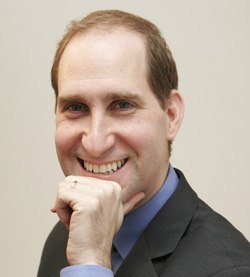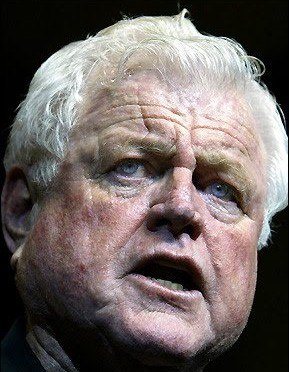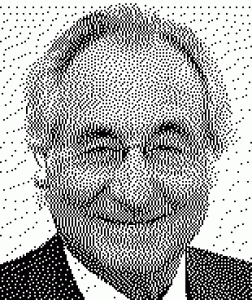Last year’s dinner had an air of momentous imminence, coming, as it did, on the eve of Barack Obama’s election as president, amid a world economic crisis that recalled the collapse of laissez-faire capitalism in the 1930s. The labor movement itself was approaching the end of a year in which it would record an uptick in union membership for the second time in a row after decades of decline. Lerner began the evening by telling his guests, “The months and years ahead are our chance, our moment to be part of making history.”
Lerner and the other Break Fast attendees are at the core of a resurgence of Jewish involvement in the labor movement. Like the legendary Jewish labor leaders of the ’30s, the folks at Lerner’s house by no means represent a majority of union leaders. But like those earlier leaders, they are exerting an outsized influence, working at the front end of some of the most innovative, and occasionally divisive, union campaigns of today.
“When you are there, you physically experience the number of Jews in Washington who are in the labor movement — but also the larger passion for social justice that is driving that,” Lerner told the Forward.
There is, of course, a firm precedent for this quiet, mostly unacknowledged trend. Before World War II, an explicitly Jewish labor movement was an engine of change for the broader American society. Morris Hillquit helped found the United Hebrew Trades labor federation in 1888, and in the ’30s this body morphed into the Jewish Labor Committee, which was one of the most powerful Jewish organizations in America. At that time, the heads of the heavily Jewish garment unions — men like David Dubinsky and Sidney Hillman — helped pass the legislation that created America’s social safety net and labor protections. These were Eastern European immigrants who had risen from the factory floors and moved easily among the labor community, the Jewish community and the leftist political world.
The current moment shares many similarities with the ’30s, due to the election of a president friendly to labor, the plunge in the stock market, and the resulting openness to new economic models and social reforms. The Employee Free Choice Act, which is currently moving slowly through Congress, is said to be the most significant labor legislation since the ’30s.
But the labor leaders of today are a very different breed from those of the ’30s. Jewish union leaders such as Stern of the SEIU and Booth of AFSCME — along with Larry Cohen, president of the Communications Workers of America; Randi Weingarten, head of the American Federation of Teachers, and Bruce Raynor, general president of Unite-Here — did not rise up from the working class. They have college degrees and are part of a new, sophisticated leadership that has come to the fore over the past decade and devised innovative tactics to battle the labor movement’s long decline.
“You really have the leaders of some of the largest unions — certainly some of the most progressive unions — being Jews,” said Simon Greer, a former labor activist and the current president of the Jewish Funds for Justice. “That comes out of history — and it ties back to the history.”
Unlike in the ’30s, many of the Jews involved in the labor movement today have little affiliation with the organized Jewish community — and the presence of Jews in the labor movement can be an uncomfortable topic at times, because of the relative paucity of Jews in the rank and file of union membership. But for many inside the labor movement, the Jewish presence — not just in leadership roles, but also throughout the professional staff — occasionally becomes so obvious that it cannot be ignored.
“One night last Passover, I was here trying to finish something just before Seder, and people were like, why are you here?” said Jessica Champagne, a young researcher at the SEIU. “There are just those moments where you realize that whether or not people are observant, there are a lot of Jewish folks who have found their way here.”
– – –
Despite some continuity between the earlier generation of Jewish labor leaders and the current one, the two are not connected by a simple unbroken line.
While the Jewish garment unions were national players before World War II, their political clout afterward began to fade. Then, it was industrial unions, like the steel workers, autoworkers and teamsters, that became the face of the union movement. These tended to have few Jewish members. Because many of these unions had a policy of taking leaders from the rank and file, there ended up being few big Jewish labor leaders.
“Labor was not particularly welcoming” back then, recalled Marshall Ganz, the son of a rabbi who got involved in social movements in the 1960s.
When he left the Cesar Chavez-run United Farm Workers — a progressive and open labor group — Ganz said: “For me to go work for a [conventional] union would have been a strange thing. The unions had to be reopened to a certain extent.”
This was the situation when one of the most prominent labor leaders of today, Stern, became involved. Stern joined his union of government social workers in 1972 after graduating from the University of Pennsylvania, an Ivy League school. Sitting recently at the SEIU’s sleek new headquarters in Washington, Stern told the Forward that back then, “my vision of unions was Teamster white guys and construction workers.”
Stern himself had become a social activist through his involvement in protests against the Vietnam War. But under AFL-CIO chief George Meany, a staunch anti-communist, the big unions had lined up in support of the war.
“The first thing I learned about unions was not a very good one,” said Stern. “In 1968 or 9, I was watching construction workers beat up anti-war protesters.”
But then, after Stern was elected to lead his local union, he attended the meetings of the local labor council in Philadelphia. There, he ran into a number of holdouts from the Jewish garment unions, and other Jewish union activists who “had a kind of ethical, cultural set of values that I understood better than people who had grown up in a more working-class — in many cases, Catholic — background.”
“I had never thought of the union movement as a place of Jewish activism in my growing up,” Stern said. His father had been a lawyer for small businesses in suburban New Jersey. But, Stern said, he saw at the Philadelphia labor council that “there was really a disproportionate number of labor leaders who were Jewish in major positions — and a lot of them were ones that were more involved in, I would say, the more progressive side of the labor movement.”
This was not true in many other parts of the country — and in many parts of the labor movement at that time. Stern said he sometimes thinks back on the serendipity of where he got his start.
“I always think, what would have happened if I had started my union career in, say, Ohio?” Stern said. “I don’t know what would have happened if there hadn’t been a lot of Jewish leaders. It just didn’t seem odd where I was to be a labor leader and be Jewish.”
– – –
The progressive tradition that Stern noticed was legendary in an earlier era. Tony Michels, a professor of Jewish and labor history at the University of Wisconsin, said that in the ’30s, labeling a union as Jewish was often a shorthand way of describing its socialist politics. A number were further to the left, which is to say, communist.
The two most powerful Jewish unions were the ones for workers in the men’s and women’s garment industries in New York City — the largest unions in the city at that time. It was no coincidence that both unions had close ties to the nation’s largest Jewish newspaper, the Jewish Daily Forward, with executives moving frequently between the publishing offices and the union halls. The head of the women’s garment union, Dubinsky, and the head of the men’s garment union, Hillman, were both immigrants from Eastern Europe who spoke with Yiddish accents. Together they helped found the socialist American Labor Party. Their socialist politics also shaped the unique structure and aims of the garment unions.
“The view of the Jewish socialists was that unions should be a vehicle for social change — not just a defense of narrow interests like wages and hours,” said Michels, who wrote the book “A Fire in Their Hearts: Yiddish Socialists in New York.” “They were involved in cooperative housing, and educational programming and culture. Other unions just weren’t doing that.”
 The Jewish labor movement itself was divided internally for decades by a bitter feud between socialists and communists. The socialists originally coalesced between 1897 and 1900 around the Socialist Party founded by Hillquit and Eugene V. Debs. The Forward, founded in 1897, was established originally as an organ for their more moderate views. The communists, who split off from the Socialist Party after the 1917 Russian Revolution, favored a more militant, confrontational approach in the workplace and in politics. The two groups battled for decades over control of union locals, newspapers and even Yiddish schools, until communists were expelled en masse from the major unions in 1948.
The Jewish labor movement itself was divided internally for decades by a bitter feud between socialists and communists. The socialists originally coalesced between 1897 and 1900 around the Socialist Party founded by Hillquit and Eugene V. Debs. The Forward, founded in 1897, was established originally as an organ for their more moderate views. The communists, who split off from the Socialist Party after the 1917 Russian Revolution, favored a more militant, confrontational approach in the workplace and in politics. The two groups battled for decades over control of union locals, newspapers and even Yiddish schools, until communists were expelled en masse from the major unions in 1948.
Historians and labor activists have given a number of explanations for the distinctive character of the Jewish garment unions. Ray Scannell, a labor researcher and historian, said that unlike many other immigrant groups, Jewish immigrants had already been isolated minorities in the places from which they had migrated. As a result, they were well practiced in banding together to protect their own rights.
“When you go back, one of the interesting things about the history of the Jewish labor movement is that they have these common organizational roots,” said Scannell, who has taught a class on Jewish labor history at the Washington, D.C. Jewish Community Center. “Whether it’s in Vilna or Warsaw, or the Lower East Side, the poor and the oppressed in the community know how to organize themselves to protect themselves.”
Scannell, director of research at the Bakery, Confectionery, Tobacco Workers, and Grain Millers International Union, has watched these dynamics play out in his own life. He is from an Irish Catholic family in New York, but his wife and children are Jewish, and he has been fascinated to see the lingering influences of history in families like his own.
“It’s such an interesting story, because as Jews in America become more assimilated, nonetheless they continue this idea, that is frankly not as well rooted in the white Protestant community, of community self-help and organization,” Scannell said. “Even as they moved out to the suburbs and married the non-Jews, there was a continuation of these ideals of social justice that connected them back with community traditions that they might not have been entirely aware of.”
– – –
By the 1980s, as Stern was beginning to rise through the SEIU, the progressive spirit in the labor movement had all but disappeared. Union membership was in a tailspin. Federal law had made it more difficult to organize workers, and most of the big unions were committing few resources to organizing new members.
In order to combat the decline, a few peripheral unions began looking to new, more sophisticated strategies to win new members and stop the decline. Both the hotel workers and the SEIU led the charge in hiring college graduates to serve in research departments that had the task of developing elaborate organizing campaigns. Stern and Lerner were both brought into the SEIU leadership during this period by Sweeney, an Irish Catholic labor leader who had gotten his own start in the New York garment unions before becoming the SEIU chief.
A major turning point came when the AFL-CIO, the largest federation of national unions, decided to open up the Organizing Institute, which was designed to provide college graduates a direct entry point into unions so that they would not have to first pass through the rank and file. The institute was founded in 1989 by a young Jew from Kentucky, Richard Bensinger, who had been recruited into the union movement by Richard Rothstein, a Jewish labor organizer and activist at one of the garment unions.
Bensinger, who is a labor consultant today, remembers when his team began looking over applications from college students who wanted to attend the institute.
“It used to be almost a joke. They would all say, ‘I’m interested because my grandmother or my grandfather was in one of the garment unions,’” Bensinger told the Forward. “It was incredible how many people who came to the institute came out of families that were involved with that union. It was application after application.”
Amy Dean, who was the head of the labor council in California’s Silicon Valley during the 1990s, said that in the years after the Organizing Institute was founded, when Sweeney won the presidency of the AFL-CIO, she saw the first steps of a process that brought a “huge influx of Jews coming to the table and wanting to be a part of the labor movement.”
“It was exciting to be in there,” said Dean, who is currently finishing a book on the modern labor movement. “We were looking outward for the first time in many years.”
Dean herself had decided to join the labor movement rather than attend graduate school at the University of Chicago. A number of the other major labor leaders of today came into their unions after law school. This sort of influx has not happened at every union; many unions have maintained old policies of promoting leaders and organizers from the rank and file only. But it has been unions that took people from the outside, such as the SEIU and the hotel workers union, that have experienced the fastest growth. The SEIU, for example, has grown to more than 2 million today under Stern, from 625,000 members in 1980, when Sweeny took its reins.
But there is a potential downside: Stern and others in the new generation of union leadership have been criticized by more traditional union leaders for giving union jobs to people who did not get their start in the working class. The generation of college-educated leaders have also been involved in a number of recent fights that have divided the labor movement (see sidebar). Paul Buhle, a labor historian at Brown University, said that in the current era, when unions are largely trying to organize black and Latino populations, the presence of so many educated Jewish leaders can be an “embarrassing detail.”
“Not to be the rank and file is embarrassing — because Jews are giving orders even in progressive unions,” Buhle said. “It comes back to a conspiratorial view of Jews in American life.”
– – –
The labor movement is, of course, not the only progressive movement that has drawn well-educated Jews, but many progressive Jewish activists say that the labor movement has a different character to it.
On a practical level, the labor movement is one of the few progressive causes offering young people both steady work and a reliable institutional structure — in short, a career. Michael Perry, who works for the AFSCME in Illinois, observed: “These are kids like me, who grew up in middle-class life. They won’t go back and work minimum wage. They want to do justice. But I still have a middle-class job here — with decent wages and benefits.”
But Perry and others also point to the unique historical connection.
“The labor connection is more than 100 years old,” Greer noted. “This puts it in another category than other progressive causes.”
Even with the history, though, the current demographic gap between union membership and leadership has, at times, required some negotiating.
Lerner’s first job was in North Carolina, organizing workers for the garment union. During that campaign, Lerner said, one of the local newspapers wrote an article implying that the organizers were a bunch of “northern Jews and rabble rousers.” Lerner recalled what happened when the organizers next met: “After we all got indignant, we looked around the room, and there really were so many Jews in the room.”
It is no coincidence that the two most prominent films about unions in recent times have both been about the cultural exchanges that happened when a Jewish organizer pushed to organize non-Jewish workers. In the 1979 movie “Norma Rae,” the Northerner is Reuben Warshowsky, who is said to be a composite of a number of Jewish organizers who worked for the textile unions. The more recent movie, “Bread and Roses,” is based on a Jewish organizer, Jono Schaffer, who worked on Lerner’s Justice for Janitors campaign.
While the current generation of Jewish labor leaders has risen up in a largely non-Jewish labor movement, their work has nevertheless helped some of them find their Jewish roots.
Greer got his start at a campaign that was being run by Cohen, who is now the head of the Communication Workers of America. Greer said that at the campaign, known as Jobs With Justice, “I really came into my Jewish identity in noticing that among all these people I was working with, there was a disproportionate number of Jews.”
Greer said it made him want to explore “what led me in my background and what led them in their backgrounds to want to be in this kind of work.”
Outside of organizations like Greer’s, though, the connection is seldom made so explicitly and with such pride. Many Jewish labor leaders see few reasons to connect their labor work and their ethnic heritage, at least as they have experienced the latter. Most Jewish organizations today have not made labor a central theme in their political platforms. The Jewish Labor Committee, which has served as a meeting point between organized Jewish community and organized labor, is a fraction of the size it was when Dubinsky and Hillman founded it in the ’30s.
There are efforts underway to change that. Stuart Applebaum, president of the Jewish Labor Committee, says he sees a greater willingness among labor leaders to identify with the Jewish community.
“There is a renewal now,” Applebaum told the Forward. “You find that the Jewish leaders have not run away from their Jewishness as they once did.”
Sneiderman, a longtime official at the AFL-CIO and wife of Lerner, said that the idea of the couple’s Yom Kippur Break Fast event is part of a “conscious effort to try to make the link for people who work in the labor movement and are Jewish, so that they see that it’s not by accident that they are doing this work — and that is tied to their roots and values.”
“We’ve lost a lot of our history,” said Sneiderman, who recently left the labor world to take a job at the Jewish youth group BBYO as chief field officer.
For his part, Stern said that he recently looked back through a family scrapbook to try to recover some of his own history.
“You do wonder how you get here — you know, what were my parents teaching me?” Stern said. Stern had a Jewish education; he became a bar mitzvah at a Reform synagogue in northern New Jersey. But at the dinner table, labor was never a subject for discussion. In his scrapbook, though, Stern found the project he had done for his synagogue confirmation. It was an ethical will that went into depth “about being ethical, and trying to use your life to help other people.”
“Clearly, the values that had been instilled in me by my parents had been much more of service than of success in a traditional sense,” Stern said, looking back.
“Underneath kind of a very normal middle-class, New Jersey life, they did actually teach me some things,” he said.
After a pause, he added, with a laugh, “I’m praying it’s true for my son.”
 It honors the memory of a jewish mega-donor’s grandparents.
It honors the memory of a jewish mega-donor’s grandparents.






